Hermès: The ultimate luxury company
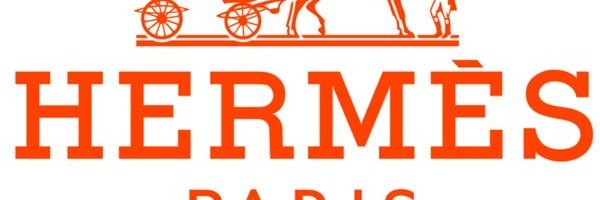
Hermès is a unique example of a highly successful premium business model
Hermès is perceived as the most exclusive luxury brand in the World, recognized by its luxury peers and high-end luxury customers for its superlative manufacturing, traditional craftsmanship, brand exclusivity and family values. The group itself is a unique example of a successful premium business model. The group’s sales have grown by more than 180% over the last 10 years while the EBIT grew by more than 230% to reach EUR 1,3bn in 2014. The share price has been multiplied by 60 since 1993 and unlike other luxury brands, the group proved resilient during the crisis returning superior returns to its shareholders, who for 73% of them are heirs of the founding family. (Appendix 1 &2)
The Business Model:
Founded in 1837, by Thierry Hermès, a French harness maker, the company subsequently cautiously diversified, across different product categories to satisfy the needs of its loyal traditional wealthy customer base and limit the company dependence on any business line or region while preserving its brand equity. The group always maintained an extreme control over its development (limited M&A, internal funding..), production and distribution network, focusing on superior quality, keeping a very long-term perspective, seeking higher profit on a lower sales volumes and considering Group’s duties beyond financial return to be the preservation of a certain human and cultural capital (Appendix 3) .
The business is integrated, centered on a unique brand strategy, rooted in its longstanding history of producing ultra-high quality distinguishable products requiring high levels of craftsmanship, mixing an essence of understated elegance, creativity, and inimitable service. The group production is organized by “Metiers” – the artisanal divisions (Leather, Ready-To-Wear (RTW), Silk, Fragrances, Watches, Petith) but customers are the same, Human capital and IT systems are common, and processes are centralized, with a very high involvement of the family. (Appendix 4)
The group distinctive positioning, combines a unique pricing power (though management emphasizes that it charges only costs plus a fair margin) –and commands superior pricing points – with the ability to sell entry-level items such as silk products, jewelry or small leather goods so as to capture not only the value it creates for its core target group but also the value generated by inviting aspirational customers in the group’s base.
The Operating Model:
- Supply Chain Management:
Sourcing: The Group is almost completely vertically integrated to control the quality of its raw materials their costs, and ensure adequate supply.
Production: Hermès controls the production of c.80% of the products it sells (zero licensing policy), using few carefully selected sub-contractors only in segments for which it lacks expertise e.g RTW (France or Italy), Watches (Swiss)… Hermès still hand-produces in France most of its products leveraging its tradition and the superior craftsmanship of its employees. (Appendix 5 & 6 – Video ). This handcraft is a very labor intensive process (e.g min. 15 hours for Kelly or Birkin handbag) and contributes to the long lead times certain items, creating a bottleneck.
Distribution: Hermès has a limited online presence as distribution mostly happens through directly operated stores, where the company can control the level of care a client receives (Appendix 7). Over the years, Hermès has grown its network of DOS and franchise stores while reducing distribution through third-party retailer as a way to preserve its brand integrity.
This unique model is reflected in higher employees’ costs than the sector average (22% of sales vs 19%), a lower level of working capital (16% vs 26%) and higher capex targeted toward the production capacity and the store network.
2. Innovation Management:
Innovation: Ranked #13 on Forbes’ list of the world’s most innovative companies (ahead of Netflix) Hermès changes every six months a third of its c. 50,000 SKUs thanks to freelancer’s creativity (60% of the Group’s designers). The innovative character of the group is exemplified by its new division, Petith featuring one of a kind objects made from rejects (cf Video).
The constant stream of innovation maintains clients’ interest and acts a good protection against counterfeit; a crucial point as the group places great importance on the protection and defense of its intellectual property rights.
3. Human Capital management
HR policies: Human capital is core to Hermès model. In order to recruit new craftsmen, Hermes has entered partnerships with schools and put a strong emphasis on a long internal training process (incl. cultural trainings such as the “Inside the Orange Box”). Thanks to its significant investments in Human Capital development, its Group cultural recognition of Know-How and empowerment of Artisans, there is limited turnover (Appendix 8) .
The operating model is thus fundamentally aligned with the group business model: it both supports and feeds it. However such model is limited in terms of growth and scalability, and flourished thanks to Hermès unique capital structure, which might be endangered should the control exercised by the founding family diminish.
“A press officer recently asked me: Do you have a Director of Quality at Hermès. To which I answered: No we don’t. At Hermès everyone is a guarantor of quality.’ Christian Blanckaert, Executive VP in charge of International Affairs
“The quality is in the eye and the hand of the artisan,” Axel Dumas, chief operating officer
Sources:
Wikipedia
http://www.luxurydaily.com/hermes-pressured-to-uphold-traditional-practices-in-lvmh-feud/
http://www.forbes.com/sites/susanadams/2014/08/20/inside-hermes-luxury-secret-empire/
http://knowledge.insead.edu/world/china/louis-vuitton-or-hermes-569
http://www.businessoffashion.com/articles/intelligence/the-secret-to-hermes-success
http://www.wsj.com/articles/SB10001424053111903596904576517151602728260
http://www.usinenouvelle.com/article/architecture-concevoir-une-usine-aujourd-hui.N73900
http://www.hermes.com/index_us.html
Selected brokers reports



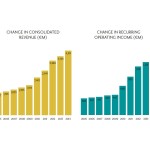
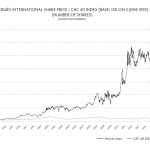
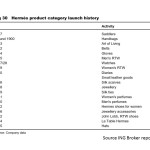

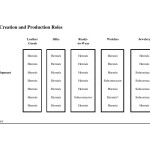
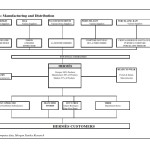

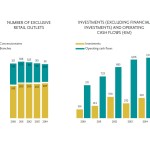
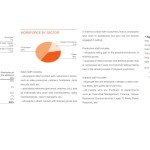
Very interesting! I thought your post brought out two great points:
1) Challenges brought about by competition i.e., counterfeits, necessitates innovation. I wonder if Hermes would have been able to innovate Petith in the same way if the pressures of counterfeits was not strong.
2) The business decision to scale would probably tarnish the Hermes brand as quality and client service would be more difficult to monitor and control. While I think Hermes could certainly amass the operational expertise to build scale, such a decision would not be beneficial for the business.
Hi Anna,
Many thanks for your thoughts.
1) On your point on Petith – On top of counterfeits, my understanding is that it has been created to re-use scrapped materials (maximizing the use of expensive raw materials) as well as foster creativity of the Craftsmen in house. It is also a good way to value the employees know-how and show how all métiers can build on each other as long as they share the same core values of excellence and creativity. It is finally an excellent manner to distinguish yourself from competitors as you can build one of the kind objects – which would appeal to your core and aspirational customer base, and because your model is so unique – you only can do it – others don’t have the resources to imitate you. As far as counterfeits are concern – the core idea from Hermès is that quality will set them apart anyway – it takes years to develop the basic skills their products require and raw materials are just not available. In fact you will notice that the logo of the brand is not used as much as for other brands: you will recognize Hermes when you see it because of its quality no need for a logo. This is the whole concept behind understated elegance.
2) I completely agree on the potential dilution risk of scaling up – it is important here to keep a full control especially on the service side (as written above, risk is limited as regards quality) and actually so far the brand has done an amazing job at balancing accessibility for its core customers and sufficient rarity to keep an exclusive image. A way they used to favor that is how stores are supplied and management empowered: once manufactured, all products are all sent to a warehouse near Paris; “twice a year more than 1,000 store representatives come to Paris for an event called “Podium,” where they select which pieces of merchandise they will carry. Each flagship store must pick at least one item from each of the 11 métiers”. Managers are thus free to select their unique assortment – and the customers are constantly on a worldwide “treasure hunt”. “For example, only in Beverly Hills can they find a $12,900 basketball, and the $112,000 orange leather bookcase was sold exclusively at the Costa Mesa store. So when they fall in love with that $11,300 bicycle there’s a pressure to get it, since the company’s website, while ahead of many luxury competitors, offers just a smattering of the Hermès product line.”
Again the operational model is aligned to support the brand, create value to the customers and capture it.
The financial results are quite compelling, but it isn’t clear to me how hand-crafted and labor-intensive operating models create a higher quality product. Have you considered that the rapid pace of new product innovation at the firm requires investment in flexible resources, such as high-quality human capital versus investing in capital intensive automated manufacturing? Will the firm be disadvantaged in the future when innovations in automated manufacturing allow a higher degree of new product innovation? Or will the firm’s high gross margin insulate it from this pressure?
Great job! Great company! Thanks for posting.
Hi Guy,
Thanks for your post,
I believe, the concept behind the model to be: nothing can replace a crafted and inspired Human being. For example a craftsman will be able to detect, almost immediately, how do make the best use of a skin for a certain product. Given the complexity of the thinking process and the amount of information needed to make these decisions – automated manufacturing is, from my perspective, far from being able to compete – or maybe at a very high costs (e.g Artifical Intelligence…) . As the production is not standardized at all I guess it limits the threat.
As mentioned Hermès focuses on high quality human capital, and invest with a long term perspective, it is also able to build based on “others'” innovation and form partnership to better serve its clients. For example they recently launched an Hermes version of the apple watch: http://www.hermes.com/applewatchhermes/en/?c=US so as to capture new trends in society.
Great note! Your document is articulated, to the point, and provides a rationale as to Hermes’ success. I am curious however, to understand more about innovation management at Hermes. The firm’s incredible success has stemmed, it seems from exponential international expansion. I am curious to know the number of customers Hermes attracts, and how it keeps growing / changing its SKUs (ties for instance have seen repeated decline sales over the past years….what’s the alternative?). I for example think of the brand Hermes created in China that seems to require some time to ramp up to expectations. Can Hermes’ DNA be replicated?
Another aspect I would be interested in is how Hermes fits its family ownership model, with its list company status and how this affects Hermes business model.
I was opened to these points as I did find your note to the point and extremely clear as to how Hermes generates value and how it has aligned its business and operating models. Bravo!
Merci Gilles,
Very interesting comment – few thoughts on that.
The firm’s success has stemmed I believe from its clear vision, consistency and focus on quality (which from my perspective defines true luxury) – international expansion has just been a way to increase sales and thus capture more value. I do not have data on the split between new and returning customers however it seems that the core customer base is extremely loyal to the brand. (e.g Victoria Beckman is rumored to have more than 100 Birkin bags – a collection worth circa EUR 2mn …). The group keeps growing by adding new references however I’m not sure growth to be a major objective of the Group – family owned and very successful.
On your point relative to the Chinese market – Hermes started the Shang Xia group in 2007, however the two brands / groups are separated – just a common holding -Hermes International – the idea is to leverage on the Chinese culture and its unique ancestral techniques to develop another ultra-high end producer – using local materials (e.g jade, bamboos, porcelain…). Both groups thus have the same philosophy. So far ramp-up has been slow – but I believe this is normal as it takes time to develop the sourcing networks, source the employees with the appropriate skillset (or train them) and develop a brand that resonates with a high-worth customer base. I however personally believe they should be able to have an interesting asset in the medium term.
Finally on the family business model – my take is that such structure buys time to the group. They don’t have to face the market pressures and can remain independent to pursue their own long term vision. The group just embodies the family values and exigency. Family members are still everywhere in the company’s hierarchy, and at all crossing points/ decision points. The listing of the company few years ago was a way to enable certain members of the third & fourth generation(s) to exit and monetize their shares. However by retaining a double shares structure (not all shares have voting rights, and family members have pacts) the family managed to maintain an absolute control – as underlined by the recent failed attempt by B. Arnault to take over the group.
Very interesting note, thanks for posting. I am very surprised how this fashion company was ranked as #13 innovative company ahead of even Netflix. Regarding this note, I am curious apart from SKU changes (thanks to Freelancer’s creativity) what other efforts (if any) they are contributing to maintain as innovative fashion company. Thank you!
Hi Ajung,
Thanks for your post – My take on innovation is that in this group it can come from everywhere and the Group’s culture values/ encourages it. Hermes is not a fashion company it is a luxury company – they are not interested in fitting/ inventing a trend but in providing long term value to their customer by offering high quality products that matches their needs & envies. By employing highly crafted people they can adapt to any demand and can remain alert – able to adapt quickly (cf the above mentioned Apple Watch). From my perspective this is how they manage to stay ahead of the innovation curve.
Interesting post. A truly amazing company that has managed to create a league of its own amongst all the luxury brands. A couple of points I would be interested in understanding better:
1) Freelance model. I was totally unaware of the prominent role freelancers play in the design process. Do these individuals function as sub-contractors? Given the emphasis Hermes places on human capital (as you highlight), I’m curious how they manage relationships with these third-party individuals.
2) You mention this fact, but it would be interesting to understand how large of a role the family ownership structure plays in the success of the company. I wonder if it’s given them the ability to think longer-term and make difficult decisions that other conglomerate-owned fashion companies are unable to make.
3) Also, very interesting point on scalability. Clearly the business has grown over time, but given the luxury nature of the product, scale is not necessarily a good thing as it can jeopardize the brand’s exclusivity. This is certainly not a problem that most businesses have!
Great stuff, thank you for sharing!
Hi cfpj,
Many thanks for your comments.
1) On the freelance model – my understanding is that they do work with contracts preserving their IP rights; Hermes contributes its technical knowledge, produces and sells (it seems to work like a partnership, however I have limited info on that point); Please find here an example of a freelancer https://jumpedonthebandwagonlate.wordpress.com/tag/hermes/
2) Absolutely – the group can have a long term perspective and isn’t focused on short term profits – it can use this time as a competitive advantage to differentiate itself- it can invest in long term training, can develop its network with limited pressure…The lack of focus on short term gain was for example a way for the group to integrate vertically – buying companies which were distressed (but had know-how, expertise…), integrating them and creating long term value for the group while reinforcing the barriers to entry. Time is of the essence for this business model – time is somehow the ultimate luxury.
3) On growth and scale – I completely agree with your point – as mentioned in my reply to Anna so far the brand has done an amazing job at balancing accessibility for its core customers and sufficient rarity to keep an exclusive image. This was possible mainly thanks to smart stores supply and management empowerment.
Very interesting post. In particular, I found your points on the pricing model interesting – balancing margins with the value generated by inviting aspirational customers into the group’s core base. Thanks for sharing!
Hi Mondli,
Thanks for your post – indeed the Group found a clever way to harvest beyond its natural base which is impressive.
This post highlighted a very interesting observation. The way in which you manage the production process for a luxury item is markedly different from the way in which you manage the production process for other low-cost goods. The process of producing a bag is extremely labor-intensive, resulting in longer throughput and cycle times (given one employee may spend 15 hours creating a bag). While this may be a liability in other industries, this may be an asset for Hermes. Its limited distribution channels and lower cycle times (relative to its competitors) generate excess demand for its products and increase both the exclusivity and reputation of its brand.
Hi TomChallenger,
You are spot on – imagine that there are two years + waiting lists for certain handbags – and that it is a true challenge to get on these lists. You even have books written about this quest: http://bringinghomethebirkin.blogspot.com/2014_04_01_archive.html
Considering that some of these models have been released 70 years ago – this demonstrates how a well conceived products can just become must-have and tremendously increase your brand value.
Hermès brand management should be a case taught @HBS 😉
NMA! I loved this post. Thank you for writing it. You really articulated what it is about the operating model that makes Hermes’ business model so successful. I admire Hermes as a business and appreciate all the insight you brought to how they do what they do.
Within Hermes’ operating model you mention several categories of competitive advantage. Two I found especially interesting:
1. Supply Chain Management
You note complete vertical integration. It’s fascinating that Hermes has continued to do this when many extremely high luxury craftsmanship-focused companies have strayed from an original strategy of complete vertical integration (long before anyone even thought about it in terms of vertical integration).
2. Innovation Management
I was also struck by your mention of Hermes being ranked on the Forbes innovation list. I had read that before but I loved your analysis of why this is. I watched the video you highlight. The fact that Hermes has created this petit h group that is turning “already used” supplies and turning them into art and sellable items of beauty is really a great example of Hermes keeping a clientele that is highly sophisticated and fickle interested in Hermes and its products.
Hi Roxy,
Many thanks for your comment – I also admire this group – probably because its values go far beyond the mere financial return.
I guess that these values gave them the long term perspective and the statement of purpose – the clear mission, that enabled them to strive.
The family’s leadership is so far exemplary and helped the group navigate through difficult times when the model was under attack. Their vision and resilience proved to be right.
A great lesson of leadership.
Thank you, NMA, for this insightful post. You summarized very well the operating model of Hermès regarding its supply chain, innovation, and human capital management. I understand that you were limited to the most important differentiation factors of Hermès. However, I wonder how Hermès’ brand strategy as 2nd most valuable luxury brand translates into its operations of brand building, advertising, and marketing? E.g. how did it change over time, how much is it influenced by metiers and/or regions?
Thank you CO,
That’s a very interesting question. The amazing thing about Hermès is that they have an extremely focused marketing approach with very limited advertising in the media and no “egeries”.
The Group sometimes uses printed media, primarily to advertises its fragrances and watches in national/ international fashion and lifestyle magazines but it mainly communicates about its products and more specifically about how the products are made through exhibitions and shows. The objective is to show the level of craftsmanship and details involved so as to justify its premium prices.
Since 1993 – Hermès launches annual themes, that capture some of the spirit of Hermès to unify its marketing efforts across the different collections, (cf http://hermes.digitalurbana.com/2015/01/yearly-themes/) however the Group doesn’t hire any “star” to represent the brand. The star is the brand / the product itself. Especially as the company’s core target market would partially be part of this star system and the group would thus potentially partially cannibalize its own market.
Finally the group is quite active in terms of public relations, focusing on sponsoring events that highlight the company’s heritage, inspiration and tradition (e.g Prix de Diane (horse race) or the Saut Hermes au Grand Palais http://www.sauthermes.com/fr/) or using its flagship stores (les “Maisons “) as venues for exhibitions, social gathering….
Again, the group is coherent in terms of business model and operational model – everything is made to support the brand, reach and connects with its unique target audience and leverage the Group’s history and skillset.
I found Hermes’ methodology for quality control very interesting. Even as a high-end fashion brand, Hermes has put tremendous investment into employee training, so every employee is well-aware of the quality standard and there is no need for an actual quality control personnel. Given the high labor cost and material cost(exotic material and best craftsman) of putting together an Hermes product, this methodology makes perfect sense in terms of reducing waste related to defects.
Thank you Audrey,
Your comment is perfectly aligned with my understanding – I will add to your point that this is also an excellent management practice to fully empower your employees. As we have seen in class – such practices often deliver amazing results !
Interesting article! In percentage terms, what is the leather costs impact on the final price?